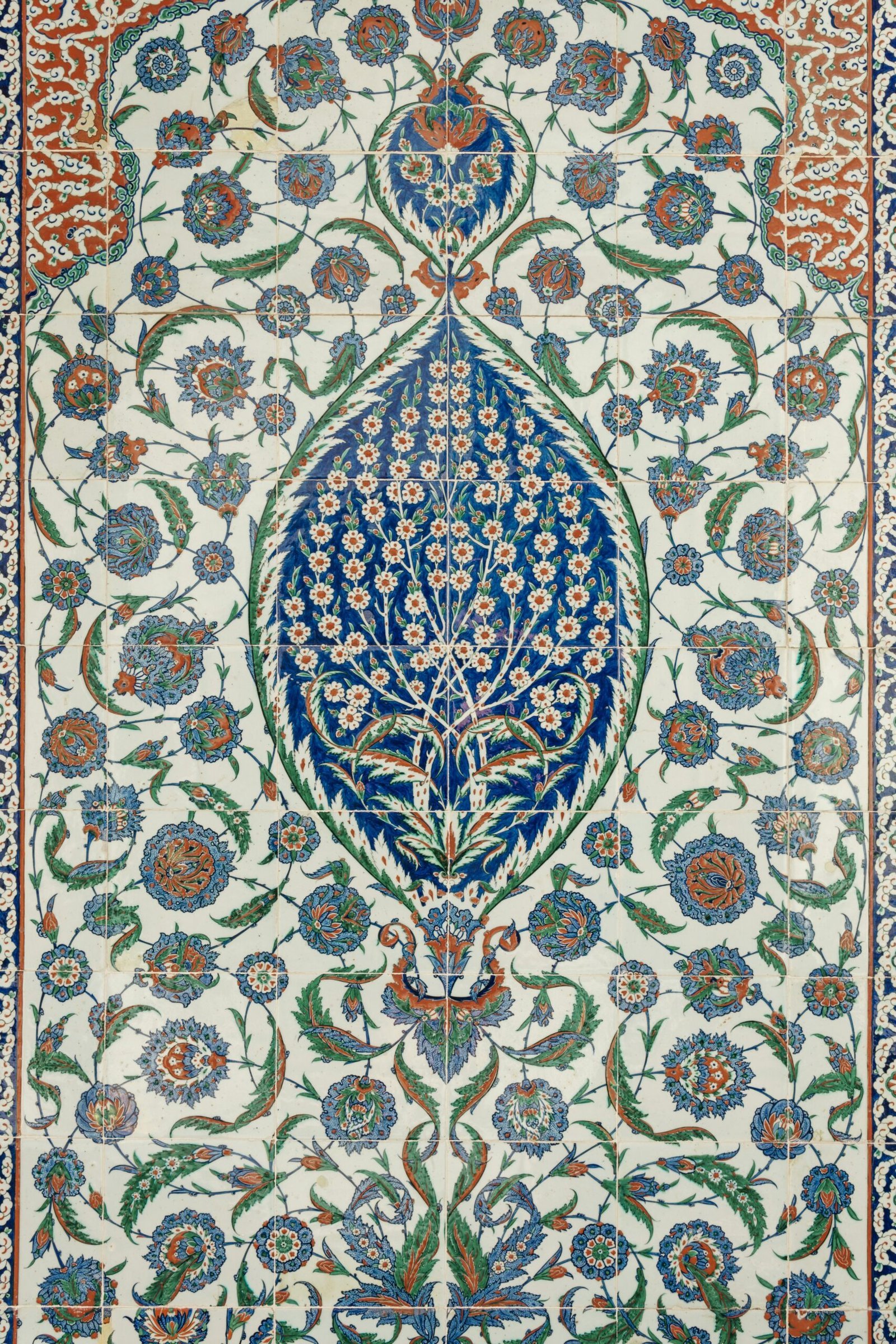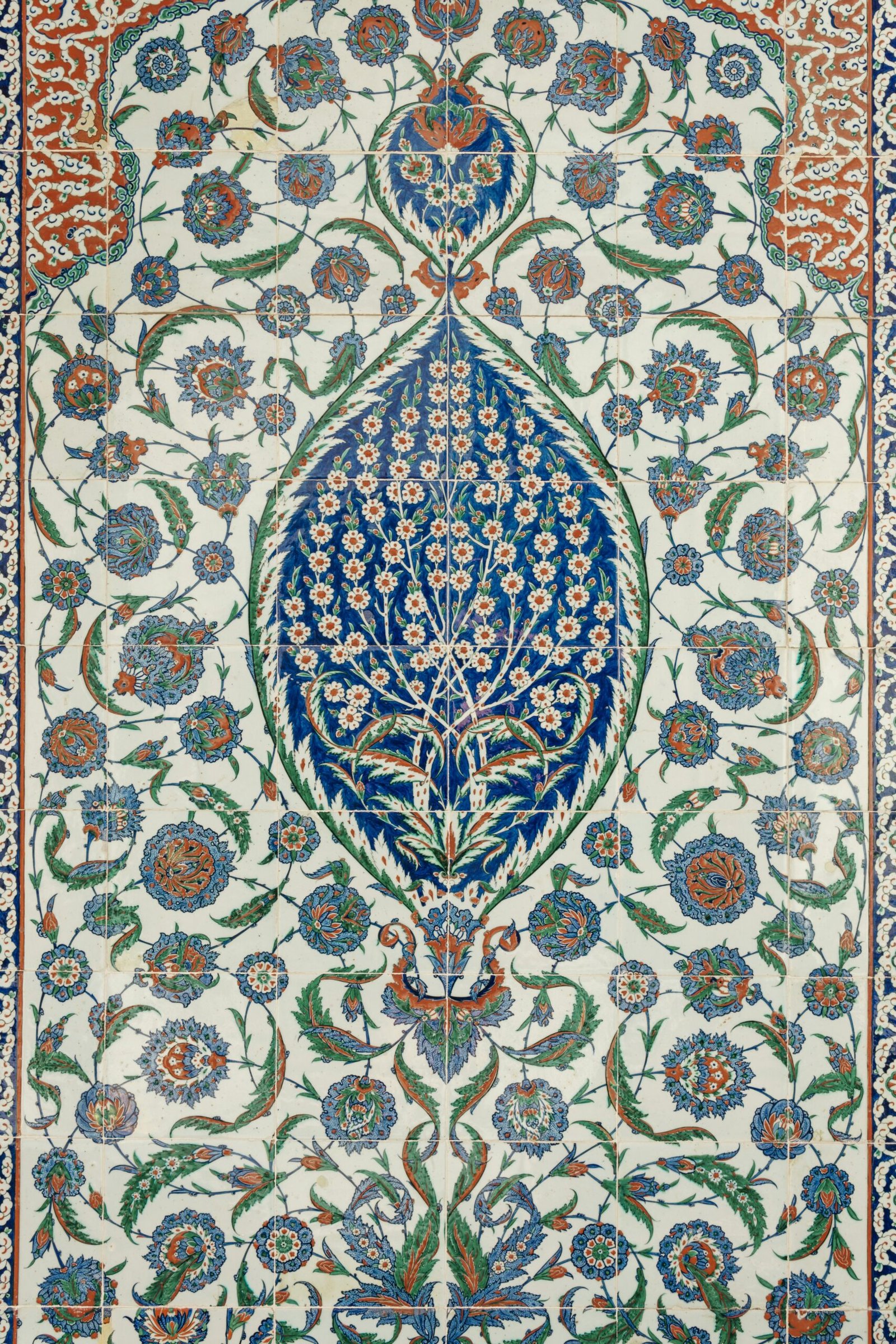
Introduction to Iranian Shopping Culture
The shopping culture in Iran is deeply rooted in its historical and cultural context, offering a unique experience that extends beyond mere transactions. Traditionally, bazaars serve as the heart of commerce in Iranian cities, functioning not only as marketplaces but also as social hubs where communities gather. These bustling environments are replete with vibrant colors, enticing aromas, and the sounds of lively negotiations, contributing to a dynamic atmosphere reflective of Persian hospitality and culture.
Historically, Iranian bazaars date back to ancient times and have been pivotal in establishing trade routes that connected the East and West. They have continuously evolved, adapting to the needs of society while maintaining their core significance. The layout of these markets, often labyrinthine, reveals a myriad of goods, including local crafts, spices, textiles, and distinctive Persian ceramics. Each stall tells a story, grounded in the craftsmanship and traditions passed down through generations.
Bargaining is an integral aspect of shopping in Iran, a practice that fosters social interaction and showcases respect for the relationship between buyer and seller. Unlike the fixed pricing systems prevalent in many western countries, the art of negotiation is celebrated, transforming the shopping experience into an engaging dialogue. This process not only facilitates better deals but also enhances the cultural experience, encouraging a deeper understanding of local customs and community dynamics.
Through this lens, shopping in Iran transcends mere consumption; it is a reflection of the country’s rich cultural tapestry. Those who explore Iranian markets emerge with not just physical items but also valuable insights into the heritage and communal values that define the nation’s identity. As visitors navigate through the bustling aisles, they participate in a living tradition that underscores the importance of community, craftsmanship, and cultural exchange in Iranian society.
The Allure of Persian Ceramics
Permanently etched in the cultural tapestry of Iran, Persian ceramics possess an ancient legacy that offers a glimpse into the artistic prowess of the region. These beautifully crafted items come in various styles, reflecting the diverse influences and traditions that have emerged over centuries. The techniques employed—often passed down through generations—are crucial in creating the intricate decorations and vibrant colors that characterize Persian pottery.
Common materials used in Persian ceramics include earthenware, stoneware, and porcelain. Each material demands specific crafting methods, leading to distinctions in appearance and durability. Notable techniques such as glazing, kiln firing, and hand-painting culminate in unique surfaces that capture the essence of Persian artistry. Electric and gas kilns are now used alongside traditional wood-fired kilns, incorporating modern advancements while preserving ancient techniques. The result is often a juxtaposition of the old and new, evident in the final product.
Regions such as Isfahan, Kashan, and Yazd are particularly celebrated for their ceramics. Each area showcases its own distinctive styles; Isfahan, for instance, is renowned for its richly decorated blue and white pottery, while Kashan is famous for its lusterware and intricate floral designs. The history behind these artistic traditions can be traced back to the Seljuk and Safavid periods when artisans laid the foundation for iconic Persian ceramic styles that are hallowed to this day.
When looking to purchase authentic Persian ceramics, there are several indicators of quality to keep in mind. Examine the craftsmanship; handmade pieces typically exhibit slight imperfections, indicating their unique nature. Inspect the glaze for vibrancy, as authentic ceramics tend to have deep, rich colors. Additionally, seek reputable vendors who can provide provenance, ensuring that your purchase supports local artisans and their time-honored techniques. By understanding the allure of Persian ceramics, one can appreciate the artistry and historical significance that each piece holds.
Jewelry Through the Ages: A Persian Perspective
The history of Iranian jewelry is a reflection of the rich cultural tapestry of the region, showcasing an array of craftsmanship that has evolved over millennia. Traditionally, Persian jewelry has been created using materials such as turquoise, silver, and gold, each carrying its own unique symbolism and significance. Turquoise, for instance, has long been regarded as a protective stone, believed to bring good fortune and ward off evil. This vibrant blue stone is often featured in intricate designs, enhancing the overall elegance and beauty of the jewelry.
Silver has also played a prominent role in Persian jewelry design. Its use is not only aesthetic but also practical; silver was historically more accessible than gold and has been favored for its durability and resistance to tarnishing. Artisans have employed traditional methods to create stunning pieces that reflect regional styles, from simplicity to opulent designs adorned with gemstones. Gold, the most coveted of metals, signifies wealth and status, often used in statement pieces that showcase intricate filigree work and gemstone settings. Such pieces can elevate any collection, captivating collectors and casual admirers alike.
The cultural significance of specific jewelry pieces cannot be understated. For example, the use of motifs representing nature, such as birds and flowers, is a testament to the Persian ethos that values the beauty of the natural world. Many pieces are crafted to commemorate special occasions, such as weddings, with designs symbolic of love and prosperity. When exploring the exquisite realm of Iranian jewelry, it is advisable to seek out reputable jewelers known for their authentic craftsmanship. Local bazaars in cities like Isfahan, Shiraz, and Tehran offer a treasure trove of such artisans, providing an opportunity to appreciate the artistry while acquiring unique pieces that embody the spirit of Persian heritage.
Traditional Crafts: The Heart of Iranian Artisanship
Iranian traditional crafts represent a significant aspect of the country’s rich cultural heritage and artistry. Among the most notable crafts are carpet weaving, calligraphy, and hand-painted tiles. Each craft showcases intricate techniques honed over centuries and embodies the creativity and dedication of Iranian artisans. These crafts serve not only as visually stunning pieces but also as reflections of historical narratives and regional identities.
Carpet weaving, for instance, is one of Iran’s most celebrated traditional crafts. Renowned for their unique designs and superior quality, Persian carpets are crafted using a variety of techniques that vary by region. The artistry involved in creating these masterpieces is both labor-intensive and meticulous, often requiring months or even years to complete a single carpet. The colors used in Persian carpets stem from natural dyes, allowing for vibrant, rich palettes that appeal to collectors and admirers worldwide. Popular locations to purchase these carpets include local bazaars and specialized art shops in cities such as Isfahan and Tabriz.
Calligraphy, another exceptional form of Iranian craftsmanship, reflects the country’s deep-rooted appreciation for poetry and literature. Persian calligraphy encompasses various styles, each characterized by its unique guidelines and materials. Artists use traditional tools like reed pens and specially prepared inks to create stunning pieces that often combine verses from famous poets with intricate designs. Visitors can find exquisite examples of calligraphy in art galleries or directly from skilled practitioners in workshops.
Moreover, hand-painted tiles are a vital part of Iranian architecture and decor. These tiles, often adorned with vibrant colors and intricate designs, are primarily produced in cities like Kashan and Qom. The craftsmanship involved requires artists to paint each tile by hand, resulting in a one-of-a-kind piece that enhances both contemporary and traditional spaces. For those seeking authentic hand-painted tiles, exploring local artisans’ shops or visiting tile-making workshops provides a unique purchasing experience.
Engaging with these traditional crafts offers valuable insight into the rich tapestry of Iranian culture. Moreover, supporting artisan communities through purchases not only preserves these time-honored techniques but also contributes to the livelihood of these skilled craftspeople.
Navigating the Bazaars: A Shopper’s Guide
Exploring the vibrant bazaars of Iran is a unique experience laden with cultural and historical significance. These markets are not only a hub for shopping but also a reflection of Persian heritage. To effectively navigate these bustling spaces, it is essential to familiarize oneself with local customs and etiquette, which facilitate a more enjoyable shopping experience.
Understanding that bargaining is a routine part of shopping in Iranian bazaars is important. Initially, vendors typically quote higher prices, expecting customers to haggle. Engaging in friendly negotiation can yield more favorable prices. To start, show genuine interest in the items but remain polite and respectful during discussions. A good rule of thumb is to offer about 50% of the asking price and negotiate from there, as this approach often leads to a satisfactory agreement for both parties.
Timing is also key to a rewarding shopping experience. It is advisable to visit bazaars early in the morning or later in the evening when they are less crowded. This not only allows for easier movement through narrow aisles but also gives shoppers an opportunity to engage more personally with sellers. Some of the most renowned bazaars include the Grand Bazaar in Tehran, famous for its exquisite Persian carpets and textiles, and the Bazaar of Isfahan, known for its stunning ceramics and traditional handicrafts.
Each bazaar showcases distinct products, so knowing what to look for can enhance your shopping adventure. Seek out specialty items as well, such as intricately designed silver jewelry and hand-painted pottery. Exploring these markets is a captivating journey through culture, history, and artistry. Eager shoppers will find a wealth of treasures, but being informed will make the exploration even more enriching.
Support Local Artisans: The Importance of Sustainable Shopping
Supporting local artisans is crucial for the preservation of traditional crafts and the cultural heritage of Iran. With a rich history in craftsmanship that includes exquisite Persian ceramics, intricate jewelry, and an array of traditional crafts, these artisans embody the essence of Iranian culture and creativity. Sustainable shopping, which emphasizes the purchase of locally made products, empowers these skilled craftsmen and women, enabling them to thrive in an increasingly globalized market.
Fair trade practices play a significant role in this ecosystem. By choosing to buy directly from artisans or through reputable fair-trade organizations, consumers ensure that their purchases positively impact the local economy. This approach not only guarantees that artisans receive a fair price for their work but also fosters community development. In many instances, a significant portion of the income generated from sales goes towards supporting families, education, and local initiatives.
However, local artisans face numerous challenges, including competition from mass-produced goods and shifting consumer preferences. Many artisans struggle to keep their traditions alive in the face of modernization and globalization. As global brands dominate the market with cheaper, machine-made products, the survival of unique Iranian crafts hinges on the support of consumers who appreciate the artistry and cultural significance behind handcrafted items.
By choosing to purchase Persian ceramics, jewelry, and other traditional crafts, shoppers contribute to the preservation of these unique artistic expressions. Each item tells a story, reflecting the skills, values, and heritage of the artisans. This sustainable shopping approach encourages a deeper understanding and appreciation of Persian culture, ensuring that these ancient crafts continue to be passed down through generations. Ultimately, the support for local artisans not only enriches the lives of consumers but also safeguards the cultural narratives that define Iran.
Cultural Etiquette for Shopping in Iran
When venturing into the vibrant markets of Iran, recognizing and adhering to cultural etiquette is crucial for a fulfilling shopping experience. Iranians are known for their hospitality, and understanding the norms and customs can enhance your engagement with local merchants. Firstly, greetings play a significant role in interactions. It is customary to greet shopkeepers with a polite “Salaam” (hello), accompanied by a smile, which opens the door to a friendly exchange. Maintaining eye contact while greeting shows respect and sincerity, fostering a warm atmosphere.
Another aspect to consider is dressing appropriately when visiting local shops, especially in conservative areas. While Iran is home to diverse styles, modesty in attire is generally appreciated. For women, this often means wearing a hijab and loose-fitting clothing that covers the arms and legs. For men, simple and neat attire is suitable. Dressing respectfully not only aligns with local values but also reflects an appreciation for the culture, making merchants more likely to engage with you positively.
Furthermore, understanding the significance of hospitality in Iranian culture is crucial. When entering a shop, it is customary for the merchant to offer tea, sweets, or other refreshments to customers. Accepting these gestures is polite, as it demonstrates appreciation for their hospitality. Engaging in pleasant conversation about items of interest and showing genuine curiosity can lead to enriching interactions. Be mindful that haggling is common in markets, and partaking in this practice should be done in a friendly, respectful manner, often incorporating polite banter. Such exchanges strengthen relationships and can lead to better deals.
In summary, embracing the cultural norms and etiquette while shopping in Iran not only enhances the overall experience but also fosters respect and appreciation for the rich traditions that define Iranian society.
Tips for Bringing Your Purchases Home
When shopping for exquisite Persian ceramics, jewelry, and traditional crafts, it is essential to plan ahead for the safe transportation of your newfound treasures. These items often hold significant cultural value and can be delicate, so ensuring their safe return home is a top priority. The first step is to understand how to package your purchases properly. For ceramics, consider using bubble wrap or foam padding, and place them in sturdy boxes, ensuring they are snug and surrounded by cushioning material to prevent movement during transit. For jewelry, it may be prudent to keep pieces in their original boxes, if available, or wrap them in soft fabric to avoid scratches and tangling.
In addition to proper packaging, explore shipping options as an alternative to carrying items on your flight. Many shops in Iran offer shipping services for your purchases directly to your home address. This can be a convenient solution for larger or heavier items that may not be permissible as carry-on luggage. Be sure to confirm the reliability of the shipping service used by the retailer and inquire about transit time and insurance coverage for your goods.
Another important consideration involves customs regulations. Research the customs laws specific to your home country regarding imported items, particularly regarding the allowable quantities and potential duty fees. Certain items like ceramics or crafts may be subject to additional regulations, so informing yourself beforehand can help avoid any surprises at the border. Carrying receipts and any authenticity certificates can also facilitate the customs process, assuring officials of the legitimacy of your purchases. By taking these precautions, you can enjoy your shopping experience in Iran without concerns about how to transport your cherished items back home safely.
Conclusion
Shopping in Iran offers a distinct and enriching experience, deeply intertwined with the nation’s cultural heritage and artistic traditions. The diversity of products available, such as Persian ceramics, intricate jewelry, and various traditional crafts, reflects the skill and creativity of local artisans. Each item tells a story, encapsulating the essence of Iranian culture and craftsmanship, allowing shoppers to engage not just in a transactional activity but also in a cultural dialogue.
As visitors navigate through the vibrant bazaars and quaint shops, they encounter a myriad of handcrafted goods, each representing the unique attributes of different regions. The vibrant colors of Persian ceramics, for instance, showcase age-old techniques that have been passed down through generations. This deep connection to craftsmanship enhances the shopping experience, offering buyers a chance to appreciate the beauty and history embedded within each piece. Similarly, the delicate artistry found in Iranian jewelry is a testament to the tradition and meticulous effort put forth by local jewelers, inviting shoppers to take home not just an ornament but also a piece of history.
Furthermore, engaging with artisans provides a glimpse into their lives and the local culture, enriching the shopping experience as it fosters connections. These interactions create meaningful exchanges, encouraging a deeper understanding of Iranian customs and values. By taking the time to explore and appreciate the craftsmanship behind each purchase, shoppers can cultivate a profound respect for the cultural narratives that shape Iran’s identity.
In summary, the experience of shopping in Iran goes beyond mere acquisition; it is an exploration of rich traditions and local stories that truly captures the heart of Iranian heritage. Embracing this adventure not only enriches one’s perceptions but also contributes to the preservation and appreciation of these remarkable art forms.

